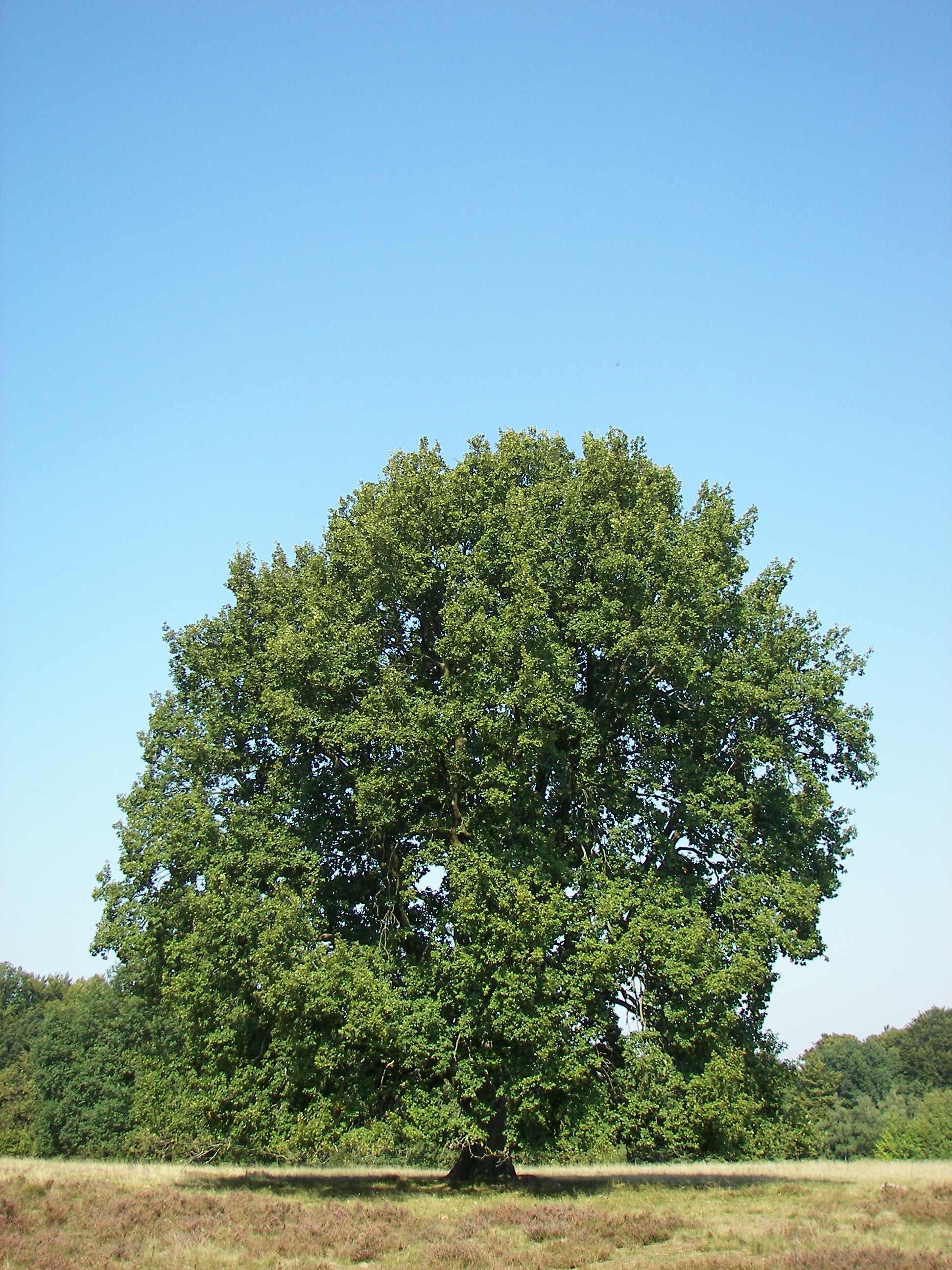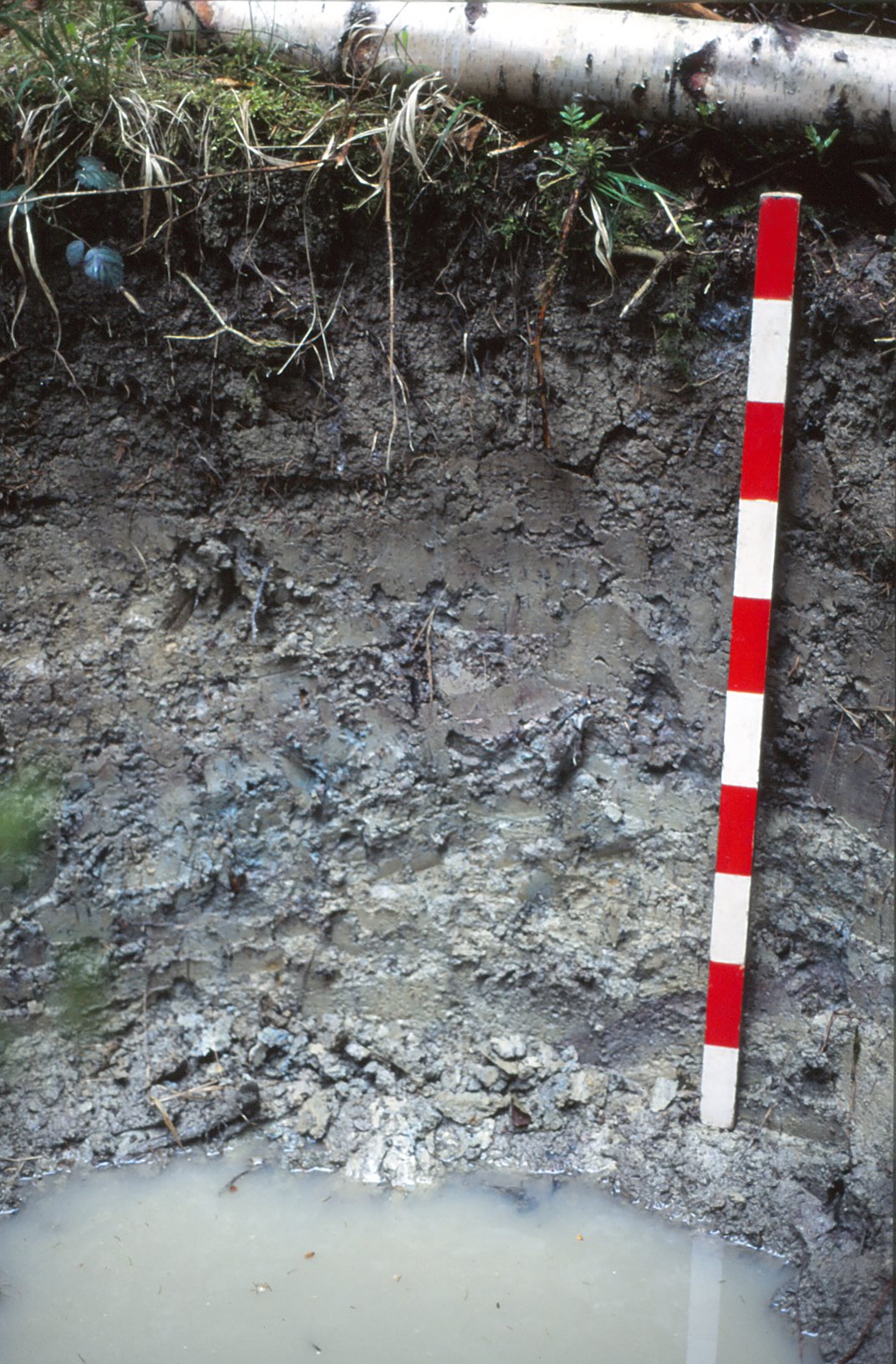|
Stagnogley
A stagnogley soil is a typically non-alluvial, non-calcareous, loamy or clayey soil with a relatively impervious, subsurface horizon. Stagnogley soils are related to the pseudogleys and are a type of gleyic soil. The name of this hygroscopic soil derives from its gley dynamics. The nutrient-poor, often heavily acidified soil is poorly aerated and is not suited to arable use on account of the poor growth performance of cultivated crops.Fritz Scheffer, Paul Schachtschabel: ''Lehrbuch der Bodenkunde.'' 15th edn., newly revised and expanded by Hans-Peter Blume. Spektrum, Heidelberg, etc., 2002, . As a shallow topsoil with a moderately stony subsoil, it is mainly used for woodland.''Stagnogley'' in: ''Microsoft Encarta'' Because of its shallow nature it is only suitable for species of trees that thrive well in these conditions, such as the English Oak. Formation This type of soil, the topsoil of which becomes bleached as a result of continual waterlogging, is often formed on sand- ... [...More Info...] [...Related Items...] OR: [Wikipedia] [Google] [Baidu] |
Stagnogley
A stagnogley soil is a typically non-alluvial, non-calcareous, loamy or clayey soil with a relatively impervious, subsurface horizon. Stagnogley soils are related to the pseudogleys and are a type of gleyic soil. The name of this hygroscopic soil derives from its gley dynamics. The nutrient-poor, often heavily acidified soil is poorly aerated and is not suited to arable use on account of the poor growth performance of cultivated crops.Fritz Scheffer, Paul Schachtschabel: ''Lehrbuch der Bodenkunde.'' 15th edn., newly revised and expanded by Hans-Peter Blume. Spektrum, Heidelberg, etc., 2002, . As a shallow topsoil with a moderately stony subsoil, it is mainly used for woodland.''Stagnogley'' in: ''Microsoft Encarta'' Because of its shallow nature it is only suitable for species of trees that thrive well in these conditions, such as the English Oak. Formation This type of soil, the topsoil of which becomes bleached as a result of continual waterlogging, is often formed on sand- ... [...More Info...] [...Related Items...] OR: [Wikipedia] [Google] [Baidu] |
Pseudogley
A Stagnosol in the World Reference Base for Soil Resources (WRB) is soil with strong mottling of the soil profile due to redox processes caused by stagnating surface water. Stagnosols are periodically wet and mottled in the topsoil and subsoil, with or without concretions and/or bleaching. The topsoil can also be completely bleached (albic horizon). A common name in many national classification systems for most Stagnosols is pseudogley. In the USDA soil taxonomy, many of them belong to the Aqualfs, Aquults, Aquents, Aquepts and Aquolls. They are developed in a wide variety of unconsolidated materials like glacial till, and loamy aeolian, alluvial and colluvial deposits and physically weathered siltstone. Stagnosols occur on flat to gently sloping land in cool temperate to subtropical regions with humid to perhumid climate conditions. The agricultural suitability of Stagnosols is limited because of their oxygen deficiency resulting from stagnating water above a dense subsoil. Th ... [...More Info...] [...Related Items...] OR: [Wikipedia] [Google] [Baidu] |
German Language
German ( ) is a West Germanic languages, West Germanic language mainly spoken in Central Europe. It is the most widely spoken and Official language, official or co-official language in Germany, Austria, Switzerland, Liechtenstein, and the Italy, Italian province of South Tyrol. It is also a co-official language of Luxembourg and German-speaking Community of Belgium, Belgium, as well as a national language in Namibia. Outside Germany, it is also spoken by German communities in France (Bas-Rhin), Czech Republic (North Bohemia), Poland (Upper Silesia), Slovakia (Bratislava Region), and Hungary (Sopron). German is most similar to other languages within the West Germanic language branch, including Afrikaans, Dutch language, Dutch, English language, English, the Frisian languages, Low German, Luxembourgish, Scots language, Scots, and Yiddish. It also contains close similarities in vocabulary to some languages in the North Germanic languages, North Germanic group, such as Danish lan ... [...More Info...] [...Related Items...] OR: [Wikipedia] [Google] [Baidu] |
Midvale Ridge
The Midvale Ridge is a natural region in South Central England formed by a band of low-lying limestone hills that run from southeast to northwest from the Vale of Aylesbury to Swindon. It has been designated as National Character Area 109 by Natural England, the UK Government's advisors on the natural environment. The Midvale Ridge crosses the counties of Wiltshire, Oxfordshire and Buckinghamshire. It is surrounded by the lowlands of the Oxfordshire clay vales and offers good views over the local countryside. The area is dominated by agriculture with a mixed arable/ pastoral farming landscape. Cereals are the most important arable crop.''109 Midvale Ridge'' at www.naturalengland.org.uk. Accessed on 7 Oct 2013 The main settlements are the town of |
Eifel
The Eifel (; lb, Äifel, ) is a low mountain range in western Germany and eastern Belgium. It occupies parts of southwestern North Rhine-Westphalia, northwestern Rhineland-Palatinate and the southern area of the German-speaking Community of Belgium. The Eifel is part of the Rhenish Massif; within its northern portions lies the Eifel National Park. Geography Location The Eifel lies between the cities of Aachen to the north, Trier to the south and Koblenz to the east. It descends in the northeast along a line from Aachen via Düren to Bonn into the Lower Rhine Bay. In the east and south it is bounded by the valleys of the Rhine and the Moselle. To the west it transitions in Belgium and Luxembourg into the geologically related Ardennes and the Luxembourg Ösling. In the north it is limited by the Jülich-Zülpicher Börde. Within Germany it lies within the states of Rhineland-Palatinate and North Rhine-Westphalia; in the Benelux the area of Eupen, St. Vith and Luxemb ... [...More Info...] [...Related Items...] OR: [Wikipedia] [Google] [Baidu] |
Central Uplands
The Central UplandsDickinson (1964), p.18 ff. (german: die MittelgebirgeN.B. In German die ''Mittelgebirge'' (plural) refers to the Central Uplands; das ''Mittelgebirge'' refers to a low mountain range or upland region (''Mittel'' = "medium" and ''-gebirge'' = "range").) is one of the three major natural regions of Germany. It stretches east to west across the country. To the north lies the North German Plain or Northern Lowland; to the south, the Alps and the Alpine Foreland. Formation The German Central Uplands, like the Scandinavian and British mountain ranges and the Urals, belong to the oldest mountains of Europe, even if their present-day appearance has only developed relatively recently. In the Carboniferous, i.e. about 350 million years ago, Variscan mountain ranges were formed in central Europe by the uplifting caused by tectonic plate collision. Immediately after their formation the erosion of the mountains began under the influence of exogenous processes during the ... [...More Info...] [...Related Items...] OR: [Wikipedia] [Google] [Baidu] |
Black Forest
The Black Forest (german: Schwarzwald ) is a large forested mountain range in the state of Baden-Württemberg in southwest Germany, bounded by the Rhine Valley to the west and south and close to the borders with France and Switzerland. It is the source of the Danube and Neckar rivers. Its highest peak is the Feldberg with an elevation of above sea level. Roughly oblong in shape, with a length of and breadth of up to , it has an area of about 6,009 km2 (2,320 sq mi). Historically, the area was known for forestry and the mining of ore deposits, but tourism has now become the primary industry, accounting for around 300,000 jobs. There are several ruined military fortifications dating back to the 17th century. History In ancient times, the Black Forest was known as , after the Celtic deity, Abnoba. In Roman times (Late antiquity), it was given the name ("Marcynian Forest", from the Germanic word ''marka'' = "border"). The Black Forest probably represented the bo ... [...More Info...] [...Related Items...] OR: [Wikipedia] [Google] [Baidu] |
Misse
The Materials International Space Station Experiment (MISSE) is a series of experiments mounted externally on the International Space Station (ISS) that investigates the effects of long-term exposure of materials to the harsh space environment. The MISSE project evaluates the performance, stability, and long-term survivability of materials and components planned for use by NASA, commercial companies and the Department of Defense (DOD) on future low Earth orbit (LEO), synchronous orbit and interplanetary space missions. The Long Duration Exposure Facility (LDEF), which was retrieved in 1990 after spending 68 months in LEO, revealed that space environments are very hostile to many spacecraft materials and components. Atomic oxygen, which is the most prevalent atomic species encountered in low earth orbit, is highly reactive with plastics and some metals, causing severe erosion. There is also extreme ultraviolet radiation due to the lack of an atmospheric filter. This radiation det ... [...More Info...] [...Related Items...] OR: [Wikipedia] [Google] [Baidu] |
Magnesium
Magnesium is a chemical element with the symbol Mg and atomic number 12. It is a shiny gray metal having a low density, low melting point and high chemical reactivity. Like the other alkaline earth metals (group 2 of the periodic table) it occurs naturally only in combination with other elements and it almost always has an oxidation state of +2. It reacts readily with air to form a thin passivation coating of magnesium oxide that inhibits further corrosion of the metal. The free metal burns with a brilliant-white light. The metal is obtained mainly by electrolysis of magnesium salts obtained from brine. It is less dense than aluminium and is used primarily as a component in strong and lightweight alloys that contain aluminium. In the cosmos, magnesium is produced in large, aging stars by the sequential addition of three helium nuclei to a carbon nucleus. When such stars explode as supernovas, much of the magnesium is expelled into the interstellar medium where it ma ... [...More Info...] [...Related Items...] OR: [Wikipedia] [Google] [Baidu] |
Iron
Iron () is a chemical element with symbol Fe (from la, ferrum) and atomic number 26. It is a metal that belongs to the first transition series and group 8 of the periodic table. It is, by mass, the most common element on Earth, right in front of oxygen (32.1% and 30.1%, respectively), forming much of Earth's outer and inner core. It is the fourth most common element in the Earth's crust. In its metallic state, iron is rare in the Earth's crust, limited mainly to deposition by meteorites. Iron ores, by contrast, are among the most abundant in the Earth's crust, although extracting usable metal from them requires kilns or furnaces capable of reaching or higher, about higher than that required to smelt copper. Humans started to master that process in Eurasia during the 2nd millennium BCE and the use of iron tools and weapons began to displace copper alloys, in some regions, only around 1200 BCE. That event is considered the transition from the Bronze Age to the Iron A ... [...More Info...] [...Related Items...] OR: [Wikipedia] [Google] [Baidu] |






